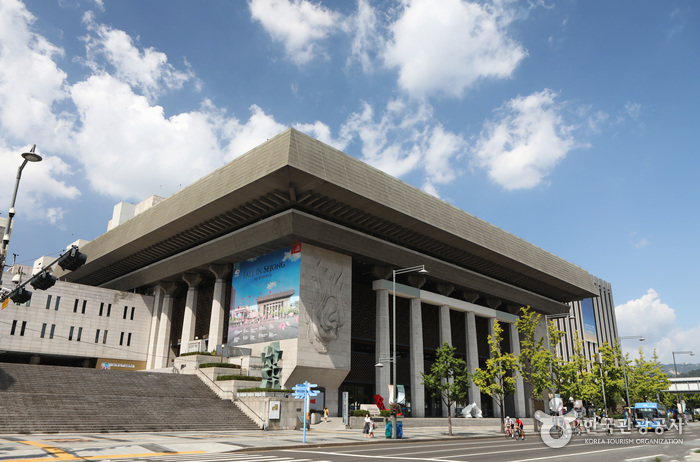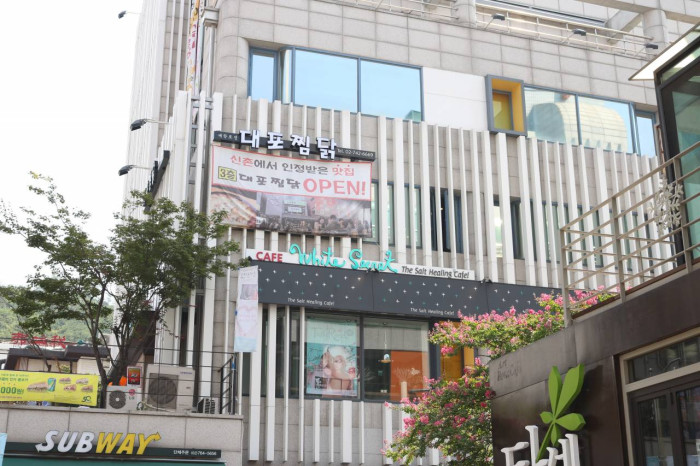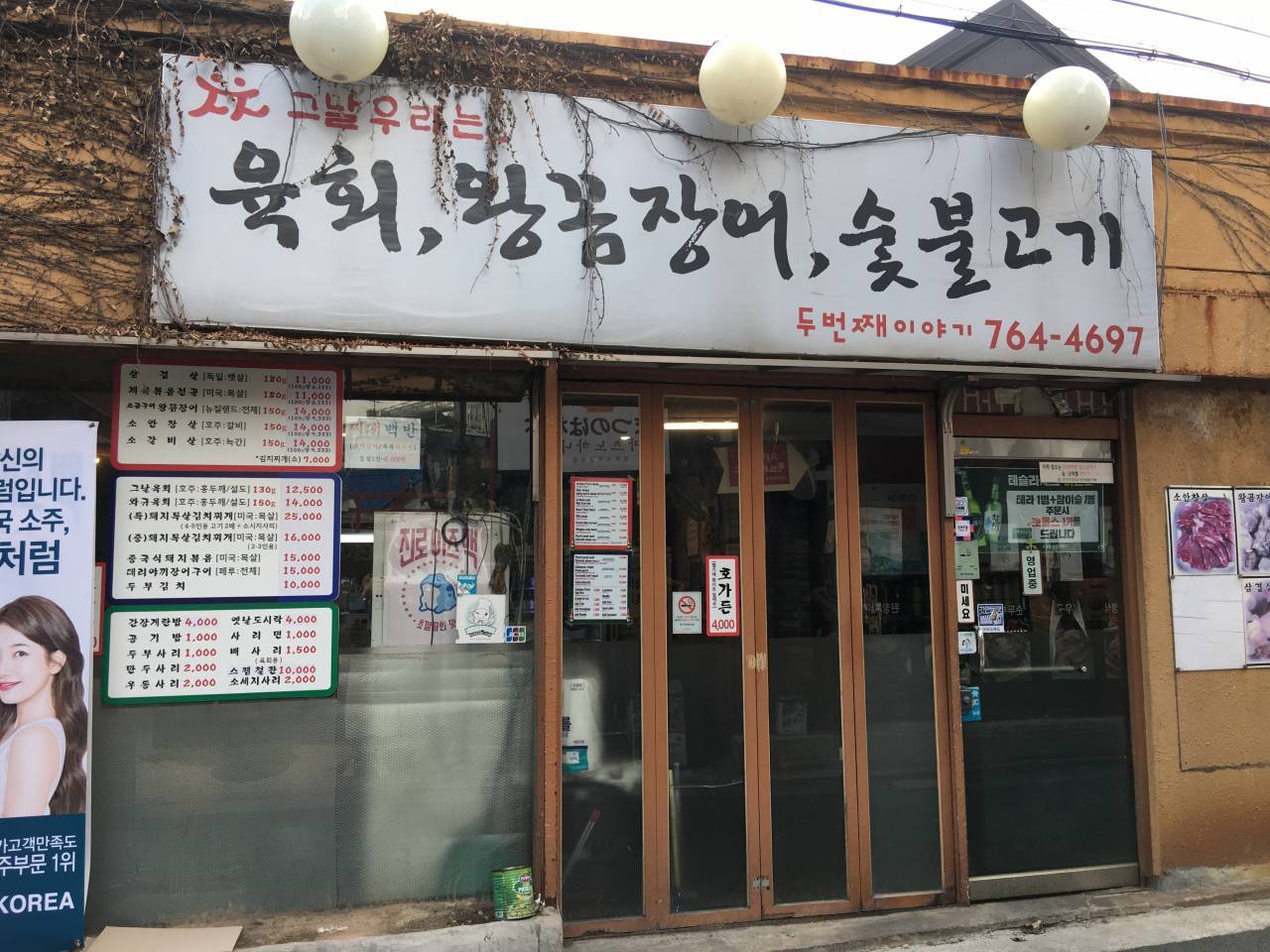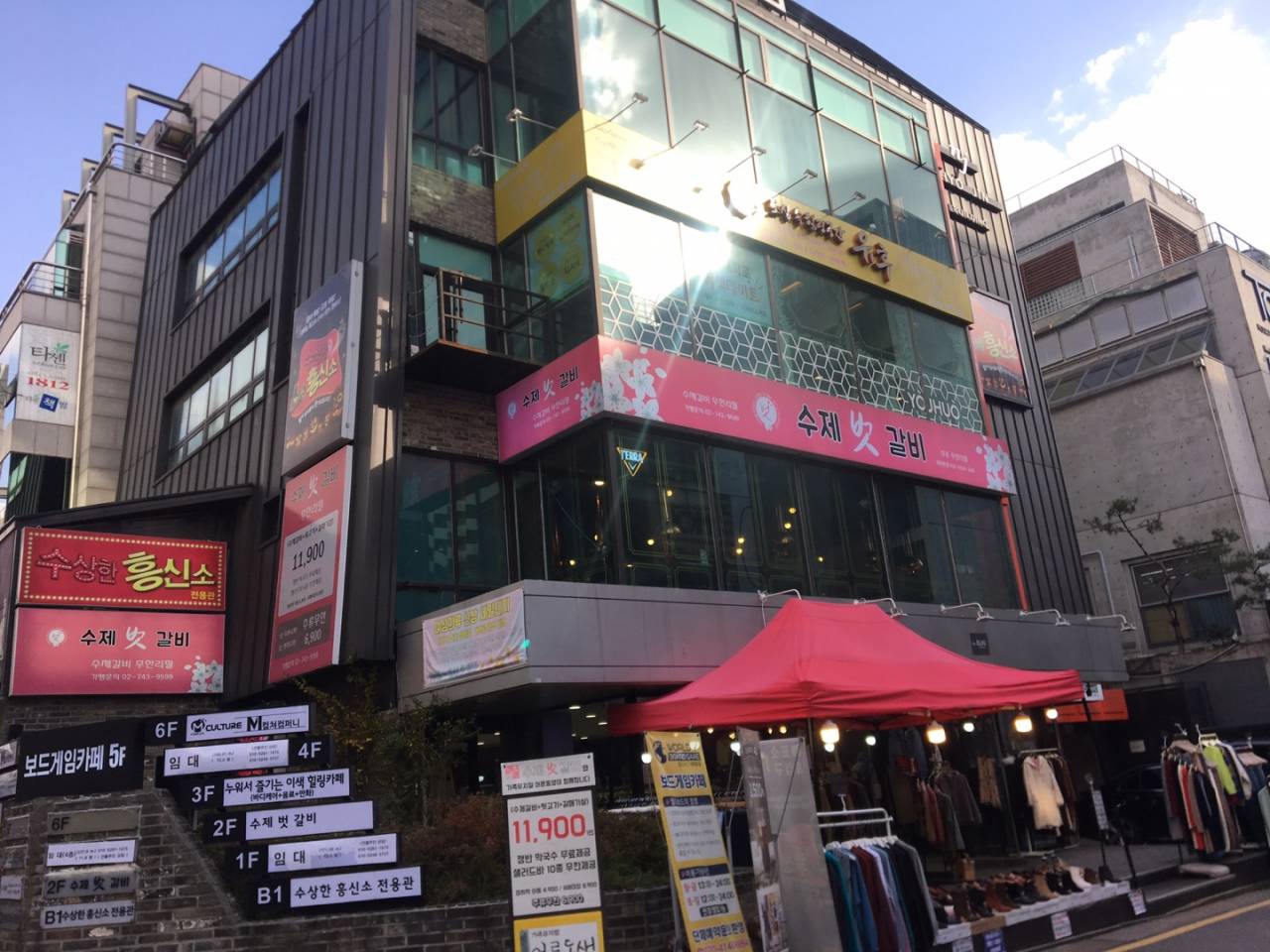Sejong Center (세종문화회관)
6.8Km 2023-06-14
175, Sejong-daero, Jongno-gu, Seoul
+82-2-399-1000
Sejong Center, officially known as Sejong Center for the Performing Arts, opened on July 1, 1999 to provide citizens with a cultural art space. Having completed a grand remodeling project in 2007, Sejong Center offers customer-friendly programs aimed at improving the quality of art performances in a comfortable resting area. Comprising the Grand Theater of Sejong Center, Sejong M Theater, Sejong Chamber Hall, Exhibition Hall, and other subsidiary facilities, Sejong Center is a multicultural art center.
Various genres of performances including traditional, classic, and crossover have taken place in the center, giving many opportunities for cultural nostalgia.
* Opened April 14, 1978
Daepo Jjimdak - Daehangno Branch (대포찜닭 대학로)
6.8Km 2021-03-19
18, Daehak-ro, 9-gil, Jongno-gu, Seoul
+82-2-742-6669
This is a Korean cuisine located in Daehak-ro, Seoul. The best menu at this restaurant is braised chicken. A restaurant that's popular among college students.
Geunal Urineun (그날우리는)
6.8Km 2021-03-18
29, Daehak-ro, 9-gil, Jongno-gu, Seoul
+82-2-764-4697
This is a Korean cuisine located in Daehak-ro, Seoul. The best menu at this restaurant is grilled sea eel. It sells grilled hagfish, which Koreans eat a lot for health in summer.
Olive Young - Hyehwa Station Branch [Tax Refund Shop] (올리브영 혜화역점)
6.8Km 2024-06-27
1F, 122, Daehak-ro, Jongno-gu, Seoul
-
Gwanghwamun Plaza (광화문 광장)
6.8Km 2025-03-13
172 Sejong-daero, Jongno-gu, Seoul
+82-2-120
Gwanghwamun Plaza was opened to the public in August 2022 after renovation. Sejong-ro, the main street of Seoul with 600 years of history, has been reborn as a space for historical and cultural experiences by restoring Yukjo Street. Woldae (Elevated Ceremonial Stage) was reconstructed at the entrance of the "Plaza that Recovers the History of Gwanghwamun," and the statue of Haetae, an imaginary animal that judges good and evil, has been restored. In addition, traces of Yukjo Street, the main street of Hanyang in the past, were restored in the ‘Plaza that recreates the scenery of Yukjo Street’ near Sejong-ro Park, with a scale model installed. This is an excellent place for a stroll with beautiful scenery, including Gyeongbokgung Palace and Bugaksan Mountain.
Suje Beotgalbi (수제벗갈비)
6.8Km 2021-03-18
79, Daehak-ro, 8ga-gil, Jongno-gu, Seoul,
+82-2-743-9599
A Korean BBQ restaurant. The best menu at this restaurant is grilled spareribs. This is a Korean cuisine located in Daehak-ro, Seoul.
Olive Young - Soongsil Univ. Station Branch [Tax Refund Shop] (올리브영 숭실대입구역)
6.8Km 2024-04-18
358, Sangdo-ro, Dongjak-gu, Seoul
-
Samsung Medical Center (삼성서울병원)
6.8Km 2025-07-07
81 Irwon-ro, Gangnam-gu, Seoul
Samsung Medical Center (SMC) has been at the forefront of change in the Korean medical field since its foundation in 1994. Guided by its new vision, "We aspire to be the frontier of future medicine," SMC is committed to delivering excellent treatment results for patients with severe and complex diseases by using the latest medical technologies. SMC's International Healthcare Center (IHC) operates an outpatient clinic dedicated exclusively to foreign patients.
Seoul Museum of Craft Art (SeMoCA) (서울공예박물관)
6.8Km 2025-06-19
4 Yulgok-ro 3-gil, Jongno-gu, Seoul
The Seoul Museum of Craft Art (SeMoCA), the first public museum of craft art in Korea, opened its doors in Anguk-dong, Jongno-gu, in July 2021 after renovating five buildings of the former Pungmoon Girls’ High School. SeMoCA studies and shares not only works, but also information, records, people, and environment related to craft art with the goal of becoming a dynamic platform for experiencing the technical, practical, artistic, and cultural values of craft.
SeMoCA holds a collection that comprises various crafts and craft materials covering multiple fields and eras from the traditional to the present. SeMoCA also holds exhibitions that feature the history of craft from traditional to contemporary art as well as local and children’s crafts, along with programs that utilize the museum’s craft installations, craft archives, craft library, and craft resource management system.
The site of the museum has deep historical roots as it is also the Andong Secondary Palace Site, where a detached palace was constructed as a royal residence for King Sejong’s son Prince Yeongeung, and served as a venue for royal celebrations, such as the wedding of King Sunjong. The site is also at the center of Jongno-gu, where Joseon-era master artisans (“gyeonggongjang”) of the royal palace produced and delivered craft works.





 English
English
 한국어
한국어 日本語
日本語 中文(简体)
中文(简体) Deutsch
Deutsch Français
Français Español
Español Русский
Русский